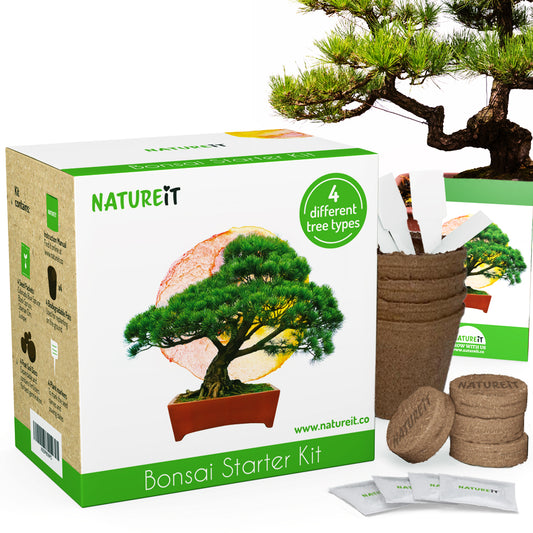It’s safe to say that Pruning is the most important practice to train a Bonsai tree. Pruning your tree regularly for maintaining and refining its shape is important. There is also structural pruning which is done to give your tree its basic shape and style and requires a more careful pruning.
In this article we will try to explain in more details on these two techniques.

In nature, in order to survive and outgrow their competition over light, trees have the tendency to grow as high as they can. This means that the main stem will always grow more dominantly than its side stems. The trunk will always take more energy and grow stronger than the branches, and the smaller side branches will get less energy to grow than their source branch. As a result, the lower and inner branches of the tree are destined to die, while the distribution of growth is directed to the top and outer parts of the plant. This situation is something we wish to avoid when trying to grow a stylish Bonsai tree.
By understanding the distribution of growth of the plant we learn that in order to reach the desired Bonsai look we can use pruning techniques to affect the apical dominance of the growth. By pruning the top and outer parts of the tree we force the tree to redistribute its growth to the inner and lower parts, and control and manipulate its growth and shape.

Pruning a Ficus Bonsai
Bonsai Maintenance Pruning
As said before, one of the most important practices in Bonsai is pruning it regularly in order to maintain and refine the shape that it was given.
When to prune a Bonsai tree
When growing your Bonsai indoors you can prune and maintain it year-round. For outdoors growing Bonsai trees it’s best to prune your Bonsai throughout the growing season, which is typically between March to September.
How to prune my Bonsai tree
When regularly pruning for maintaining the shape of your bonsai tree, you simply need to prune the branches that have grown more than their intended shape. Use pruning shears to regularly prune your Bonsai tree as it is important to force it to distribute its growth.
Pinching
For some Conifers, and especially for pine trees, maintenance pruning is recommended to be done by pinching the branch by hand rather than with shears or scissors as cutting with these tools may lead to brownish and dead leaves at the cutting area.
To prune your bonsai by pinching hold the tip of the shoot you want to prune between your thumb and pointing finger while holding the base of the shoot with your other hand’s thumb and pointing finger. Then gently pull it. It should snap at its weakest point.

Bonsai Structural Pruning
Your Bonsai is young and growing fast, you are attached to it and already grown a special bond. So we understand how much it hurts when you suddenly need to prune large branches or main stems, but this is something that needs to be done in order to re-shape your tree. It’s a hard decision on which of the branches will be removed because – a. it’s irreversible, and b. this will somehow define the future style and look of your Bonsai tree. If you are having trouble deciding on which style you should go with when shaping your Bonsai tree, you may check out our Blog for all the different ways and styles for shaping your Bonsai.
Best time for structural Pruning
Different tree types and species have different optimal pruning time. A Loblolly Pine Bonsai tree will have different optimal pruning time than a Siberian Elm for example, but in general, the best time for structural pruning is in early spring or late autumn, which is just before or after the growing season, and not during.
How to prune
When pruning and trimming it’s best to have the plant placed at the same height as you so you can best see its branch and leaves structure.
First, start by removing all the dead branches. Then, carefully explore the branch structure of your tree and decide which branches needs to be removed to create the shape you’re aiming for.
Again, you can check out our Blog for all the different and traditional ways to shape a bonsai tree, but there are no ground rules you have to follow, and you can always choose to go another way if you desire.
What you basically need to know when structural pruning is to prune the following branches:
- Small branches that grow on the same level of the trunk on both sides or parallel on same side
- Small suckers and limbs that grow at the base of the trunk and close to roots.
- Any small branches blocking the view of the main trunk
- Any dead branches or ones that are just not looking good in shape.
- Loose or hanging branches
- Upward growing interior branches
- Crossing branches
- Branches growing parallel to trunk line
- Disproportioned branches at top
If you are worried about leaving scars after pruning large or thick branches, use the right tools to prune your Bonsai. You can also use sealers like cut pastes available in Bonsai nurseries or gardening stores. The paste seals the cut stem and protects it from infections and helps it heal faster.
If your tree is healthy and strong enough and ready for pruning, it should have no problem coping with the process of pruning up to 1/3 of its foliage. Some Bonsai caregivers often prune the same amount of roots as the amount of branches they pruned in the structural pruning, while others suggest that you should only perform one major maintenance action at a certain time period (i.e. once every growing season). Keep in mind that pruning is a very stressful experience for the tree and it needs time to recuperate from this process, so if you are not sure it can handle root pruning after being structural pruned, wait until it had time to recover before re-potting it or pruning its roots.
Defoliation Pruning
The defoliation pruning method is done by pruning leaves of deciduous trees during summer to stimulate the growth of new leaves. Pruning a tree by defoliating it reduces leaves size and increased the growth of new, more dense branching. Check out our Blog for more info about defoliation.
Happy Growing!





